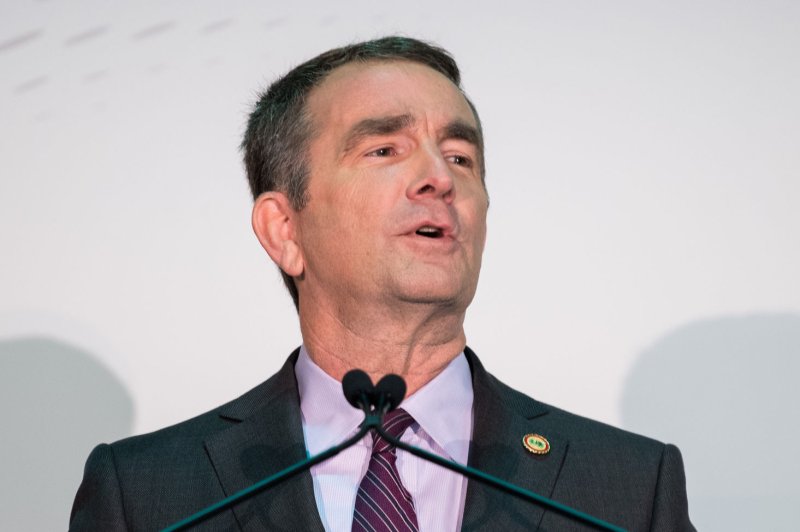
Flash droughts that can cause major crop damage can be predicted with weather data, new research says. Photo by Curt Reynolds, courtesy of U.S. Department of Agriculture
DENVER, March 5 (UPI) -- Scientists have identified ways to predict a type of quick-hitting drought, which could give farmers, ranchers and water managers early warning and options for irrigation and help them protect crops and livestock.
"Flash droughts" occur quickly and are characterized by their speed and high intensity. They can be devastating to agriculture and water supplies, a peer-reviewed essay published this week in the journal Nature Climate Change said.
"The weather will go from a normal state and then suddenly enter a drought within a few weeks, or a mild drought gets much worse very rapidly," lead author Angie Pendergrass, an atmospheric scientist at Boulder's National Center for Atmospheric Research, told UPI.
Giving a few weeks' notice to farmers and water managers might lessen the blow of a flash drought, said co-author Philip Mote, a professor in the College of Earth, Ocean and Atmospheric Sciences at Oregon State University.
"Forewarned is forearmed," Mote said. "The more experience we get with making these forecasts, the more helpful they will be for water use."
Flash droughts could be predicted by factoring in the evaporation rate of the atmosphere when other weather patterns are in place, researchers said in "Flash droughts present a new challenge for subseasonal-to-seasonal prediction."
A combination of thirsty air, or high evaporative demand, combined with stretches of no rain and extra heat, can lead to a flash droughts, Pendergrass said.
RELATED El Niño weather patterns blamed for declines in insect biodiversity
A 2012 flash drought hit the agricultural heartland of the Midwest and Great Plains, in early June, lasting through the summer and causing billions of dollars in crop losses, said Mary Knapp, assistant Kansas state climatologist.
"We got a cessation of rainfall at critical points when the crops were needing it with the highest demand," Knapp said.
Notice of flash drought conditions could help water managers in the West plan for irrigation and drinking water usage, she said.
RELATED Wetter and drier: Global warming drives weather extremes
"As we go into the spring, if we're going to see an onset of a flash drought, reservoir managers might not lower the storage levels because they will need that water later," Knapp said.
If farmers had a heads-up about the drought in 2012, they might have planted more water-tolerant crop varieties or increased row spacing in the fields so crops did not compete for water, she said.
But some decisions, like following a five-year planned crop rotation, would not have been alterable with only a few weeks' notice, Knapp said.
In summer 2017 in Eastern Montana and western North Dakota, a wet spring was followed by a flash drought.
Rangeland for cattle grazing suddenly dried up under extreme dry conditions. During the same period, a fast-moving wildfire destroyed 300,000 acres of rangeland.
Many producers weaned calves early and sold them to market, and many cut down their herds significantly that year, said Jay Bodner, executive vice president of the Helena-based Montana Stock Growers Association.
"Grass composition was such poor quality that the young calves were not putting on pounds and coming in underweight," Bodner recalled.
Giving ranchers a three-week lead time before a flash drought could have helped make some decisions about locating pasture options or alternative hay, he said.
"They might not have had to sell those animals," Bodner said.
Droughts are among the most complex weather patterns, still not well understood by climate scientists, the essay said. They can last for a few weeks or decades, and can affect a few square miles or stretch over continents.
Some parts of the western United States have been in a state of drought for decades, and that can increase wildfires.
Weather scientists and farmers try to predict how a drought is progressing via the U.S. Drought Monitor website, run by the U.S. Department of Agriculture and National Oceanic and Atmospheric Administration.
Climate scientists might have predicted the flash drought of 2012 early if they added analysis of atmospheric thirst, or evaporative demand drought index, the paper said.
Evaporative demand numbers showed that by early May, weeks before the drought actually hit, arid, hot weather conditions already were building.
One thing climate scientists can't predict, however, is when a drought will end.
It's actually harder to predict when it will rain than whether atmospheric conditions are right for a flash drought, Pendergrass said.
Meanwhile, she said she hoped more research would lead to better predictions.
"If communities are able to make plans and have them at the ready, they can prepare ahead of time before a flash drought event gets too far underway," she said.
















